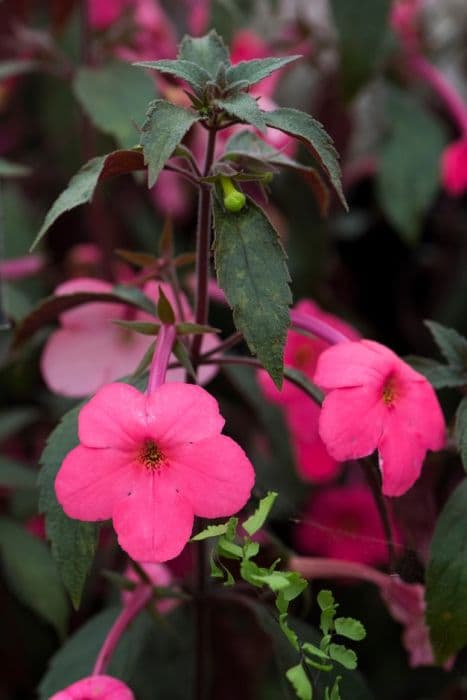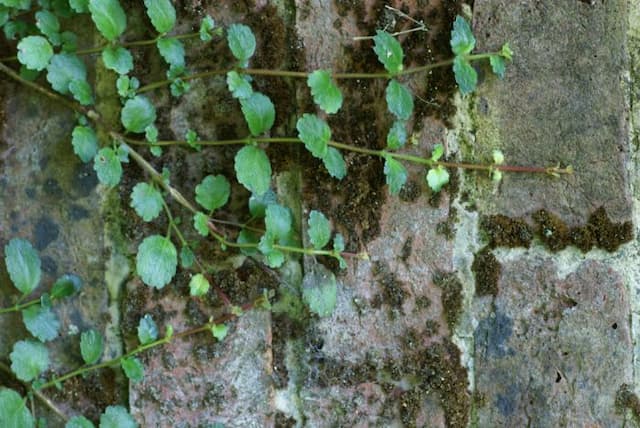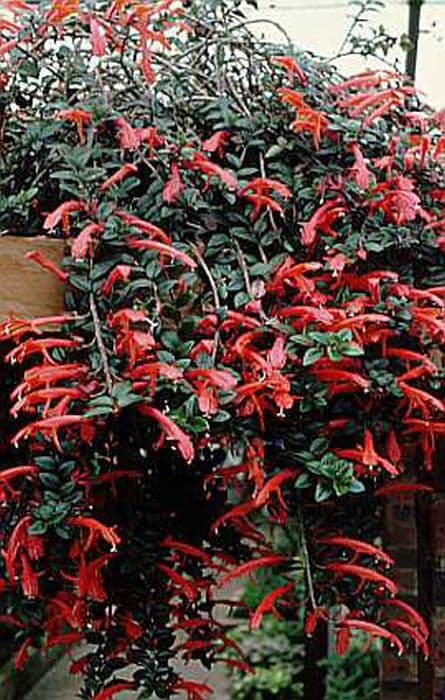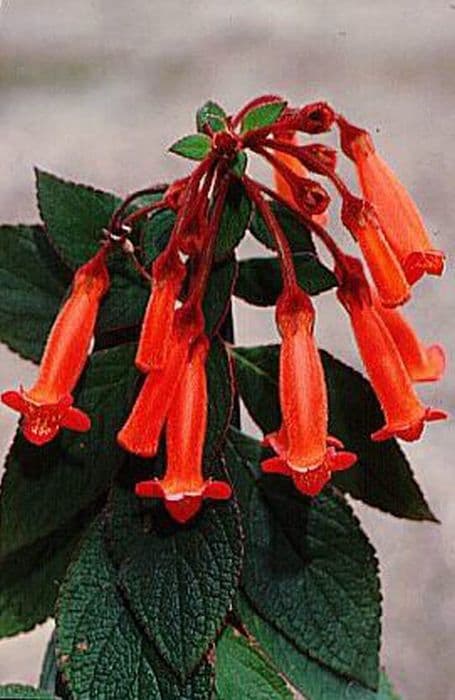Petrocosmea Petrocosmea begoniifolia

ABOUT
Commonly known as Petrocosmea, this plant is characterized by its attractive foliage and flowering habit. It has a basal rosette form, meaning that its leaves radiate outwards from the base in a circular pattern, akin to the spokes of a wheel. The leaves themselves are notable for their velvety texture and can range in color from deep green to variations that include silvery or purplish undertones. They are often heart-shaped with a pointed tip and have a slightly rippled or wavy edge. When Petrocosmea blooms, it produces dainty flowers that emerge on slender, erect stalks. The flowers are typically funnel-shaped and may come in shades of blue, violet, pink, or white, often with a delicate, lighter or contrasting throat. These blossoms can be quite captivating and add to the ornamental appeal of the plant by providing a lovely contrast against the dense, lush foliage. The overall visual impression of the plant is one that is both compact and neat, making it an attractive choice for indoor cultivation and display.
About this plant
 Names
NamesSynonyms
Rock Violet, Begonia-Leaved Petrocosmea
Common names
Petrocosmea begoniifolia.
 Toxicity
ToxicityTo humans
Petrocosmea is generally not known to be toxic to humans. There is no significant evidence or reports indicating that Petrocosmea begoniifolia, or its relatives within the genus Petrocosmea, possess compounds that are poisonous to humans. Therefore, accidental ingestion of parts of this plant species is unlikely to result in serious poisoning or hazardous symptoms. However, it is always advisable to avoid ingesting plants that are not specifically intended for human consumption as individual allergies or sensitivities can lead to adverse reactions.
To pets
Petrocosmea is not commonly reported as toxic to pets. Toxicity information specific to Petrocosmea begoniifolia is limited, but according to available resources, this plant is not listed as poisonous for household pets such as cats and dogs. As such, ingestion of this particular species is unlikely to cause significant toxic symptoms or severe health consequences in pets. However, it is generally recommended to prevent pets from eating houseplants to avoid potential gastrointestinal upset or unexpected allergic reactions.
 Characteristics
CharacteristicsLife cycle
Perennials
Foliage type
Evergreen
Color of leaves
Green
Flower color
Blue
Height
6 inches (15 cm)
Spread
6 inches (15 cm)
Plant type
Herb
Hardiness zones
10
Native area
China
Benefits
 General Benefits
General Benefits- Aesthetic appeal: Petrocosmea begoniifolia, commonly known as Chinese-primrose, offers vibrant foliage and an attractive rosette form that can add beauty to home gardens and indoor spaces.
- Low maintenance: This plant generally requires minimal care, making it a suitable option for novice gardeners or those with busy lifestyles.
- Compact size: With its small stature, Chinese-primrose is ideal for windowsills, desktops, and spaces where larger plants might not fit.
- Interesting blooms: The delicate flowers of Petrocosmea begoniifolia can provide a subtle and charming display, enhancing the visual interest of any plant collection.
- Psychological benefits: Engaging with plants like the Chinese-primrose can offer emotional well-being through the calming activity of gardening.
- Educational aspect: Cultivating Petrocosmea begoniifolia can serve as a learning experience about plant care, propagation, and the botany of the gesneriad family.
- Horticultural variety: This species can offer diversity to a plant collection, as it's less commonly found when compared to more mainstream houseplants.
 Medical Properties
Medical PropertiesThis plant is not used for medical purposes.
 Air-purifying Qualities
Air-purifying QualitiesThis plant is not specifically known for air purifying qualities.
 Other Uses
Other Uses- Education and Research: This plant can be used as a model in education for botany students to understand the rosette growth pattern and leaf morphology.
- Art and Photography: The unique foliage and flowers of Petrocosmea begoniifolia make it a popular subject for botanical illustration and macro photography.
- Meditative Spaces: Owing to its calm and compact appearance, this plant is often used to create a sense of tranquility in meditative or zen gardens.
- Collectibles: Due to their variety and collectible nature, enthusiasts may grow different cultivars of Petrocosmea begoniifolia as a hobby.
- Fairy Gardens: Their small size and attractive foliage make them ideal for including in miniature fairy gardens and terrariums.
- Cultural Events: This plant may be used in floral displays or competitions, particularly in societies focused on gesneriads.
- Botanical Jewelry: The small, delicate flowers can be preserved in resin to create unique pieces of jewelry.
- Seasonal Decor: It can be used as part of table arrangements or festive decor due to its attractive appearance and ability to bloom indoors.
- Horticultural Therapy: This plant is sometimes used in horticultural therapy programs to improve mental well-being through the act of nurturing and caring for a living thing.
- Study of Plant Adaptation: Petrocosmea begoniifolia provides an opportunity to study plant adaptation in environments with varying light levels, as it can tolerate a range of light conditions.
Interesting Facts
 Feng Shui
Feng ShuiPetrocosmea is not used in Feng Shui practice.
 Zodiac Sign Compitability
Zodiac Sign CompitabilityPetrocosmea is not used in astrology practice.
 Plant Symbolism
Plant Symbolism- Delicate Beauty: With its velvety foliage and dainty flowers, Petrocosmea begoniifolia, commonly known as Petrocosmea, represents a delicate beauty that may not demand attention yet offers a gentle charm to those who take a closer look.
- Precision and Detail: The intricate details of the Petrocosmea's leaves and flowers suggest a symbolism of precision and attention to the fine details in life.
- Balance: The symmetrical growth pattern of the plant reflects balance and harmony, indicative of a desire for equilibrium in one's surroundings.
- Introspection: The plant's understated appearance can symbolize introspection or the importance of looking inward for beauty and meaning rather than seeking it externally.
 Water
WaterThe Chinese Butterfly Flower should be watered when the top inch of soil feels dry to the touch. It typically needs watering every week, but this can vary based on humidity and temperature conditions. Make sure to water evenly, allowing the water to reach the root zone. Use approximately 8-16 ounces of water, depending on the size of the pot and the plant's needs, ensuring to avoid waterlogging. During the winter months, reduce watering to prevent root rot.
 Light
LightThe Chinese Butterfly Flower thrives in bright, indirect light. A north-facing window or a spot that receives filtered light would be ideal. Direct sunlight should be avoided as it can cause leaf burn. The plant will do well with consistent light exposure that mimics the dappled light of its natural forest floor habitat.
 Temperature
TemperatureThe Chinese Butterfly Flower prefers a temperature range between 60°F and 75°F. It can withstand a minimum temperature of 50°F but prolonged exposure to cold can damage the plant. Keep it away from drafts and sudden temperature changes to maintain its ideal living conditions.
 Pruning
PruningPrune the Chinese Butterfly Flower to remove dead or yellowing leaves and to maintain its shape. Pruning is best done in the spring or early summer when the plant is entering its active growth phase. Pruning once or twice a year is often sufficient, depending on the plant's growth.
 Cleaning
CleaningAs needed
 Soil
SoilChinese Butterfly Flower thrives in well-draining potting mix with a pH of 6.0-6.5. A blend of peat moss, perlite, and vermiculite in equal parts is ideal, ensuring moisture retention yet good drainage. Regular potting soil can be improved with perlite or sand for increased aeration.
 Repotting
RepottingChinese Butterfly Flower should be repotted every 1-2 years or when it outgrows its container. Use a slightly larger pot to allow for growth, ensuring that the soil and pot have good drainage to prevent waterlogging.
 Humidity & Misting
Humidity & MistingChinese Butterfly Flower prefers moderate to high humidity levels, ideally between 50-70%. It thrives in a humid environment, so a pebble tray with water or a humidifier can help maintain the necessary humidity.
 Suitable locations
Suitable locationsIndoor
Place Chinese Butterfly Flower in bright, indirect light indoors.
Outdoor
Grow in shade to partial sun, protect from harsh elements outdoors.
Hardiness zone
10-11 USDA
 Life cycle
Life cyclePetrocosmea begoniifolia, commonly known as Rosulate Petrocosmea, begins its life cycle when seeds germinate in moist, well-draining soil, typically in a shaded environment. The seedlings develop into rosette-forming juveniles with fleshy, rounded leaves, often displaying a velvety texture. As it matures, the plant produces small, tubular flowers with a bluish to purplish hue, typically blooming in the late summer or early fall. After pollination, which is often facilitated by insects, the flowers develop into small capsules containing numerous tiny seeds. The seeds, once mature, are dispersed by wind or water, and the plant completes its reproductive cycle. Rosulate Petrocosmea plants have a perennial life cycle, with individual specimens living for several years, often with periods of dormancy depending on their environmental conditions.
 Propogation
PropogationPropogation time
Spring-Early Summer
Propogation: Petrocosmea begoniifolia, more commonly known as Petrocosmea, is typically propagated through leaf cuttings. The best time to take leaf cuttings for propagation is in the spring or early summer when the plant is actively growing. To propagate Petrocosmea begoniifolia, carefully select a healthy, mature leaf with a bit of the petiole attached. Cut the petiole at an angle using a sterile knife or scissors. Then, insert the cut end of the petiole into a pot filled with a mixture of peat and perlite or a well-draining potting mix. The leaf should be placed in indirect light and kept at a consistent temperature of around 70-75 degrees Fahrenheit (21-24 degrees Celsius). Keep the soil moist but not waterlogged. Roots usually develop within a few weeks, followed by new growth, indicating successful propagation.









